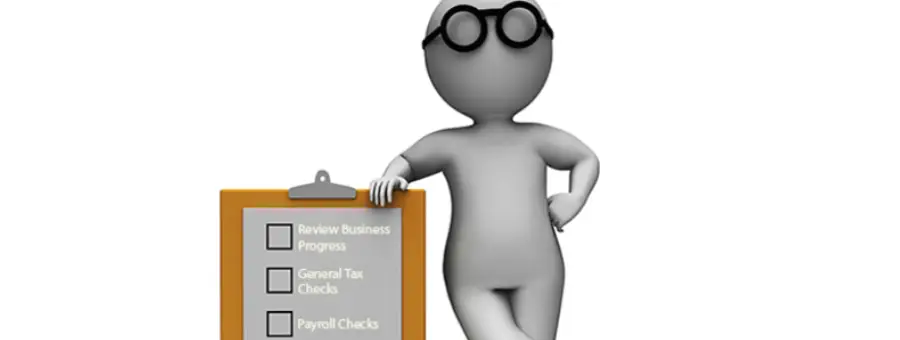
Plan The Increase in Costs to Business From 1st July
The end of the financial year (EOFY) is an important time for business owners to request financials from the bookkeeper to help measure the success, identify issues from the year just finalised, and plan ahead considering cost increases.
Along with the usual reporting of the Profit and Loss (P&L) and Balance Sheet, ICB recommends that businesses request analytical reports, financial ratios, and other measures to review their processes and operations and help them understand the story the reports tell.
This may assist in planning for the following year. Some of these tools can help create forecasts of cash flows, budgets, and what-if scenarios, as well as identify other areas of improvement in the business’s operations, from staffing to technology.
Bookkeepers Assisting Clients
Many factors contribute to increased costs for small businesses, including the 0.5% increase to super, the likely minimum wage increase, energy prices and other costs.
Your bookkeeper can help you plan for the upcoming year by assisting with budgeting and forecasting. Collaborate with them to set realistic financial goals and create forecasts based on historical data. Regularly review and update these forecasts to track progress and make necessary adjustments.
Work closely with your bookkeeper to develop tax planning strategies. Bookkeepers know tax regulations and can help clients comply with applicable laws. They can stay updated on changes in tax laws, notify you of any updates or deadlines, and ensure that clients meet their tax filing requirements on time.
Maintain open lines of communication with your bookkeeper throughout the year, not just during the reporting period.
Analyse Payroll Obligations
Changes in legislation impact the cost of employing people, namely the national minimum wage increases, award increases, and superannuation increments over the next few years. These pending increases must be built into a business budget and considered part of wage increases over time. The best practice is to overestimate rather than underestimate.
With your Bookkeeper, assess the total employment costs of the business and add a percentage on top of the total costs to cover not just the rise in superannuation but also any miscellaneous expenses and unforeseen blowouts. As an interim measure, you could provide a report indicating the cost of an estimated 5% pay increase.
Ask your bookkeeper to review employee leave and provide the outstanding levels of leave entitlements. Request an employee list to determine how much annual leave is owed in dollar value and the impact on the financials. You could also request a calculation on the impact a pay increase would have in terms of annual leave costs.
Analytical Reports
Analytical reports use qualitative and quantitative company data to analyse and evaluate a business strategy or process while empowering management and staff to make data-driven decisions based on evidence and analytics. Analytics will vary depending on the nature of the business and the analysis and may be presented as documents, spreadsheets and/or visual presentations. Some basic analytics are:
- Comparison this year to last year provides an indicator of differences. This type of report may be used to identify those differences, the reasons why they occurred, and whether those trends need to be considered for forward planning. It is a great place to start for cashflow review and forecasting.
- Comparison this year to the business budget. A budget guides what is expected and should be revisited regularly. This comparison provides a measure of expected versus actual outcomes. Variances need to be investigated to ascertain why they did not meet the expectations or why they exceeded the expectations. Once finalised, the results should be used to more accurately forward plan.
Most accounting software programs incorporate business insights or analytics that may be used for basic data analysis and performance.
Finalised Accounts
Every business owner or manager would value a report that indicates performance movements. Compare the current year to previous periods or years.
Business owners frequently ask about the relationship between the P&L reports and the cash in the bank. Tell them where they made or lost money last year. Examine the movement of the balance sheet items and look for major changes.
Example:
Based on the accounts we have now finalised for the year ended 30th June 20XX:
- Sales went up/down by $xx = x%
- Cost of Sales/Direct Costs went up/down by $xx = x%
- Gross Profit going up/down by $xx = x%
- Total Expenses went up/down by $xx = x%
- Net Profit went up/down by $xx = x%
- Total Wages went up/down by $xx = x%
Breakeven Point
Another potential high-level and quick analysis could be the breakeven analysis.
The breakeven point is a critical concept for small businesses as it helps determine the level of sales or revenue needed to cover all costs and expenses without incurring a profit or loss. It represents the point at which total revenue equals total costs, resulting in neither a profit nor a loss.
Example:
A small business has fixed costs of $10,000 per month, sells its product for $20 per unit, and incurs variable costs of $10 per unit. Using the formula:
- Breakeven Point (in units) = $10,000 ÷ ($20 − $10) = $10,000 ÷ $10 = 1,000 units
This means the business needs to sell 1,000 units of its product to cover all costs and reach the breakeven point. Any sales beyond this quantity will result in a profit, while sales below this quantity will lead to a loss.
Knowing their breakeven point is essential for small business owners, as it helps them make informed decisions about pricing, production levels, and overall business viability. By analysing the breakeven point, business owners can determine their sales targets, evaluate the impact of cost changes, and assess profitability under different scenarios.
Summary
With the assistance of Bookkeepers, small businesses can develop comprehensive budgets that provide a solid foundation for financial success and enable them to navigate the uncertainties of the upcoming year with confidence. Budget planning for the upcoming financial year serves as a roadmap for achieving financial stability and growth.
Use The ATO Cash Flow Coaching Kit
Working with a trusted adviser, the tools available in the ATO’s Cash Flow Coaching Kit are a great place to start if you’re looking to reduce business expenses. And it doesn’t have to be hard. Talk to your trusted adviser about using the ATO’s Cash Flow Coaching Kit. They can work with you to find the answers using the kit’s tools to identify where you can reduce expenses and help keep your business cash flow healthy.
- Comprehensive Resource: The Cash Flow Coaching Kit provides a comprehensive set of resources and tools that Bookkeepers can use to educate and assist their clients in understanding and managing cash flow. It includes guides, templates, checklists, and case studies covering various aspects of cash flow management.
- Practical Guidance: The kit offers practical guidance on cash flow management strategies tailored to small businesses. It helps bookkeepers identify common cash flow challenges and provides step-by-step instructions. The resources offer actionable advice and techniques that can be easily implemented to improve cash flow.
- Client Engagement: Bookkeepers can use the Cash Flow Coaching Kit to enhance their engagement. The kit facilitates meaningful conversations about cash flow management, allowing Bookkeepers to provide valuable insights, recommendations, and coaching to help clients navigate financial challenges. This strengthens the Bookkeeper-client relationship and positions Bookkeepers as trusted advisors.
- Proactive Approach: The kit encourages a proactive approach to cash flow management. It helps Bookkeepers identify potential cash flow issues in advance, enabling them to work with clients to implement strategies that mitigate risks and improve financial stability. By addressing cash flow challenges early on, Bookkeepers can help prevent more significant financial difficulties.
Previous Newsletter Articles
Bookkeeping Tips
Business Tips
HR Information
Contact Us
1300 022 270
enquiries@myabbs.com.au






